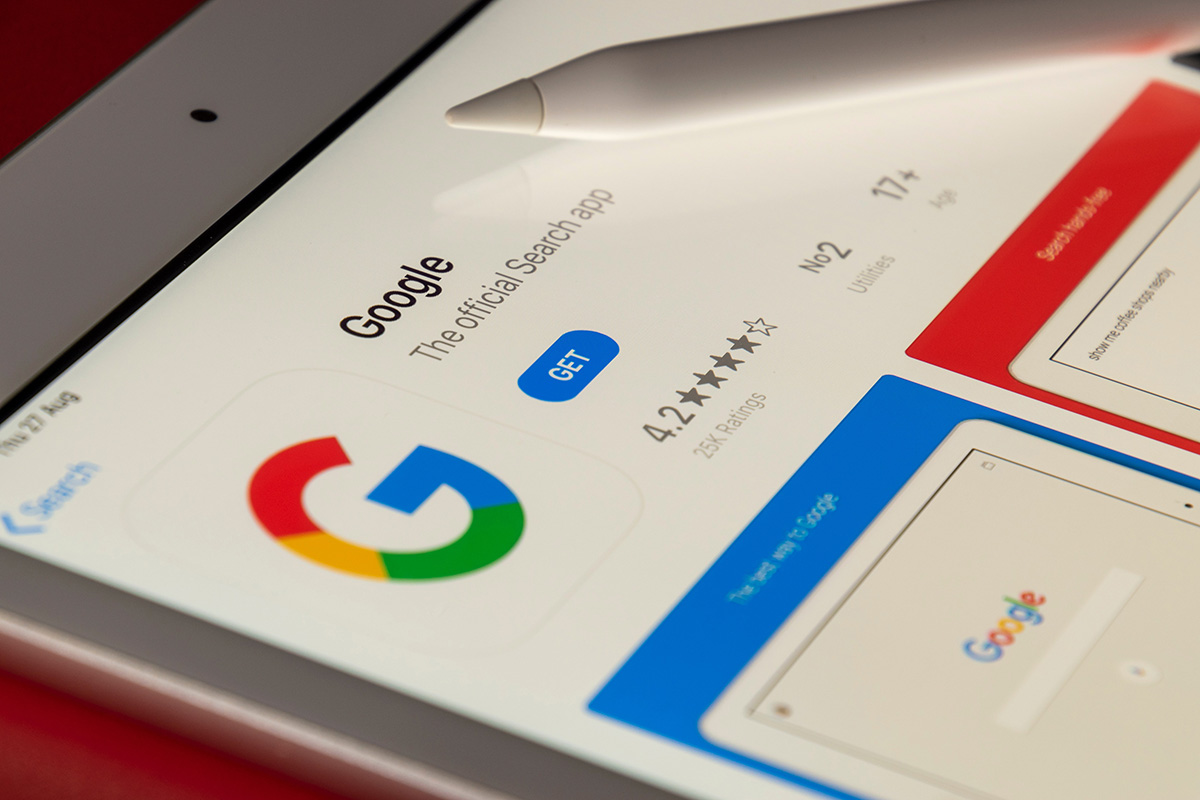Generating feedback, ratings and reviews helps you improve and publicise your app. While feedback enables you to identify issues with app performance and informs future development, ratings and reviews are key to reaching a wider audience and securing more downloads.
But convincing users to leave feedback, ratings and reviews is not always as simple as we would like.
With this in mind, we created a comprehensive guide to increasing the amount of feedback, ratings and reviews your app receives. Featuring nine easy and actionable approaches, it demonstrates how developers and businesses can work together to create apps that generate significant user engagement.
User feedback results in superior apps

User feedback is extremely valuable. Too many businesses and developers view app development as a time-limited process. The project starts at conception and ends at launch.
At The Distance, we know this could not be further from the truth.
Apps are ongoing projects. You need to tweak, update and improve an app to maintain engagement. An app that does not evolve after launch will not last long.
Feedback is one of the principal driving forces behind this evolution. It highlights where you need to improve the User Experience and how you can deliver greater value to your customers. Users do not always engage with your app in the way you intended. Sometimes, they see potential new features your business never conceived of.
World-class app developers build great apps that meet and often exceed the expectations of the businesses that commission them. Then they continue to improve them.
This is extremely difficult without user feedback.
1. In-app feedback requests
In-app feedback requests are arguably the most important and effective way of generating user feedback.
They target engaged individuals who already interact with your app, helping you reach user groups that are better equipped to provide valuable insight into the User Experience. In-app requests generate feedback from users who have racked up a bit of time in the app and benefit from a better understanding of where and how you can improve it.
In-app requests also result in higher response rates and keep your users in-app for longer. More often than not, users do not want to navigate away from the platform they are using. They opened the app for a reason and prefer not to be pushed to an external website. If you direct users from your app to an external website to collect feedback, your response rate will drop.
It will also affect user session length. The moment you direct a user away from your app to an external platform, the likelihood of them returning diminishes significantly.
This idea is baked into the core design of many of the world’s most popular apps. It is why the Facebook App algorithm punishes posts that feature external video links and promotes posts with native video content. Facebook does not want users to leave the app because they know there is a good chance they will not return.
With this in mind, here are a few top tips for collecting in-app feedback:
- Keep it short and sweet. If you overcomplicate things, your response rate will drop dramatically. A simple Like or Dislike feedback question that generates a high response rate is more valuable than a detailed feedback survey that suffers from minimal engagement. You can then target each group with more specific feedback questions.
- Include the ability to leave detailed feedback. Combining a simple feedback question with an optional text box enables users to go into greater depth if they want to. But it does not put off users who would rather complete a one-click survey.
- Don’t be too pushy. Customers do not want to feel as though they are being forced to complete a survey. Nor do they want you to interrupt what they are doing.
- Make feedback mechanisms easy to find. As well as feedback requests, ensure users can seek out your feedback mechanisms if they want to leave feedback without you prompting them. Your feedback widgets and surveys should always be easy to access.
- Make the most of feedback. There is no point in collecting feedback and doing nothing with it. We will go into this in greater depth later on, but you should look for ways to action feedback and use it to improve your services.
2. External communities

In-app mechanisms are not the only way to gather feedback. While most users prefer to constrict their engagement to the app (i.e. they do not want to be pushed to external websites), many actively search for other ways to engage with your brand.
Forums are arguably the best example of this. Customers often search for support in forums, making them the perfect place to target customers experiencing issues with your app. Users and businesses also use forums to build communities that are invested in a brand, product or app. This means you can also exploit forums to target highly engaged users.
The extent to which forums act as a community-building tool varies from brand to brand and industry to industry. For instance, TrainerRoad is a health and fitness business that offers a high-value fitness service based around a cycling training app. They boast an engaged and dedicated customer base that uses the forum to talk about the product, interact with other users and leave feedback. This feedback plays a significant role in determining how TrainerRoad develops its app and integrates new features.
While this approach works for a company with an invested user base, apps that do not attract this type of user will not benefit as much from forum-based feedback. How successfully you capture feedback from external communities, like forums, depends on your level of customer engagement.
3. Push notifications
Businesses can also use Push Notifications to request feedback. Rather than appearing in-app, they pop up on a device’s home screen.
Push Notifications can be difficult to get right. Studies show that users respond poorly to apps that send too many notifications. 42% of users disable push notifications for an app if they receive three or more in a week (Business of Apps).
Sending push notifications at different times of the day also impacts the response rate. On average, push notifications sent at 11 pm have a response rate of 11.4%, while those sent between 3 pm and 6 pm only achieve 6.4% (Avada). Generally, you want to avoid sending notifications when people are most busy – first thing in the morning and during work hours. Aim for lunch hours and the evening instead.
You can also use push notifications to request user reviews and ratings, making them a fantastic multi-purpose tool.
4. Non-user-submitted feedback

Not all feedback comes from a request. Users generate a lot of feedback without knowing it.
App analytics are a brilliant source of feedback. It enables you to understand how users interact with your app, what features they use or do not use, and whether any aspects frustrate users and force them to drop out or abandon the app.
We particularly love heatmaps. They provide wonderful visual insight into how users engage with your app and reveal much about user behaviour. Many of these behaviours are subconscious – the user does not recognise what they are doing and cannot explain their behaviour to you via other feedback mechanisms.
App analytics are a very different type of feedback from the qualitative feedback generated by surveys and forms. Typically, the findings are statistical in nature. As such, they tend to show one side of the story.
When you combine data-driven, quantitative analytics and qualitative user-submitted feedback, you achieve a more holistic view of app performance and user sentiment.
Never neglect the metrics!
Reviews and Ratings
App store reviews and ratings work in a slightly different way from feedback. But many of the same principles still apply. Let’s look at how you can increase the number of ratings and reviews your app receives.
5. App review plug-ins
App review plug-ins allow users to leave app store ratings and reviews without having to exit the app and open their device’s app store application. We already explained why this is beneficial for in-app feedback requests. So we won’t repeat ourselves.
But we will reiterate that many users prefer in-app processes and you will usually benefit from a higher response rate if you facilitate in-app reviews.
While numerous third-party plug-ins are available, both iOS and Android offer native app review APIs that we can integrate into your app. These are programmed to pop up at specific times, enabling the user to leave a quick rating and/or write a longer review.
Most people will have used apps that employ these APIs.
And most people will identify with how frustrating it is when an app interrupts what you are doing to request a review or sends too many requests. This is an important point. The timing and frequency of rating requests will determine the response rate.
Our experienced developers make sure not to disrupt the user workflow and try to time the request to appear at the most opportune moment. We look for a wow moment – the point when a user has completed a process and is most likely to be impressed by the app. This not only maximises response rates but also generates more positive ratings.
6. Update regularly and make release note requests

Updating an app regularly and introducing new features is a big crowd-pleaser. Users want to see a brand investing in their app and responding to feedback. When you do, they are more likely to leave positive reviews.
The release notes section on the app store is a space where developers can detail bug fixes, new features and improvements. It is where users go to see what the latest version of an app offers. So it is a great place to request more ratings and reviews.
Take advantage of the fact that users will be pleased about new updates and use the release notes to request a rating and review. You can also include an email address or URL that enables users to leave more substantial feedback.
7. Offer incentives for reviews
Another excellent way to increase the number of reviews and ratings your app receives is to offer users incentives.
A popular incentive is entering every user who leaves a review or rating into a prize draw. This kind of competition encourages more ratings because it is a something-for-nothing deal for users. They give nothing but a few seconds of their time and you reward them with the opportunity to win big.
Businesses with apps that gamify the user experience can offer other incentives, too. You can give users who leave reviews access to premium features, customisable interfaces or in-app awards, for instance.
8. Respond to reviews
As with feedback, it is a good idea to respond to reviews. Especially negative reviews. Demonstrating that you are willing to engage with your users and take steps to improve the User Experience and deliver value has its advantages.
In terms of your app store rating, it achieves two things:
- It encourages users to leave more reviews commending the app owners’ willingness to engage with users.
- It turns negative reviews into positive reviews, improving your overall rating.
Users want to know they are being listened to. Posting a direct response to their reviews shows them you care and are invested in ensuring your app works for its users.
9. The five golden rules for feedback and ratings

To finish up, we have condensed some of the key information contained within this guide to create five golden rules for requesting feedback, ratings and reviews.
- Keep it simple – the longer the feedback or review process, the fewer reviews you will receive.
- Timing is everything – carefully consider when and how often you request reviews and feedback.
- Use a wide range of requests – do not limit yourself to in-app feedback and rating requests. Request feedback or ratings wherever relevant.
- Respond to feedback and reviews – engage your app users and show that you are listening. It will lead to more (and better) ratings and reviews.
- Combine feedback, ratings, reviews and analytics – each of these is valuable in its own right. But together, they give you a deeper, more valuable insight into app performance.
What next?
App development is an ongoing process that depends on feedback to refine and hone the User Experience. Ratings and reviews also play an influential role in ensuring you maximise app downloads and reach the widest possible audience. Consequently, any steps developers and businesses can take to increase the amount of feedback, reviews and ratings an app generates will result in a superior product.
If you are interested in learning how The Distance can help you develop an app that engages customers and generates plenty of valuable feedback, ratings and reviews, please don’t hesitate to get in touch and talk to one of our experienced team members.
More from our blog
- Can we help with app design and user experience (UX/UI)?
- 7 Practical strategies to boost operational efficiency in your business
- Innovate or stagnate: how mobile solutions can elevate your organisation’s vision into reality
- The domino effect of fully optimised code within mobile app development
- Why understanding UX and UI is key for product success
